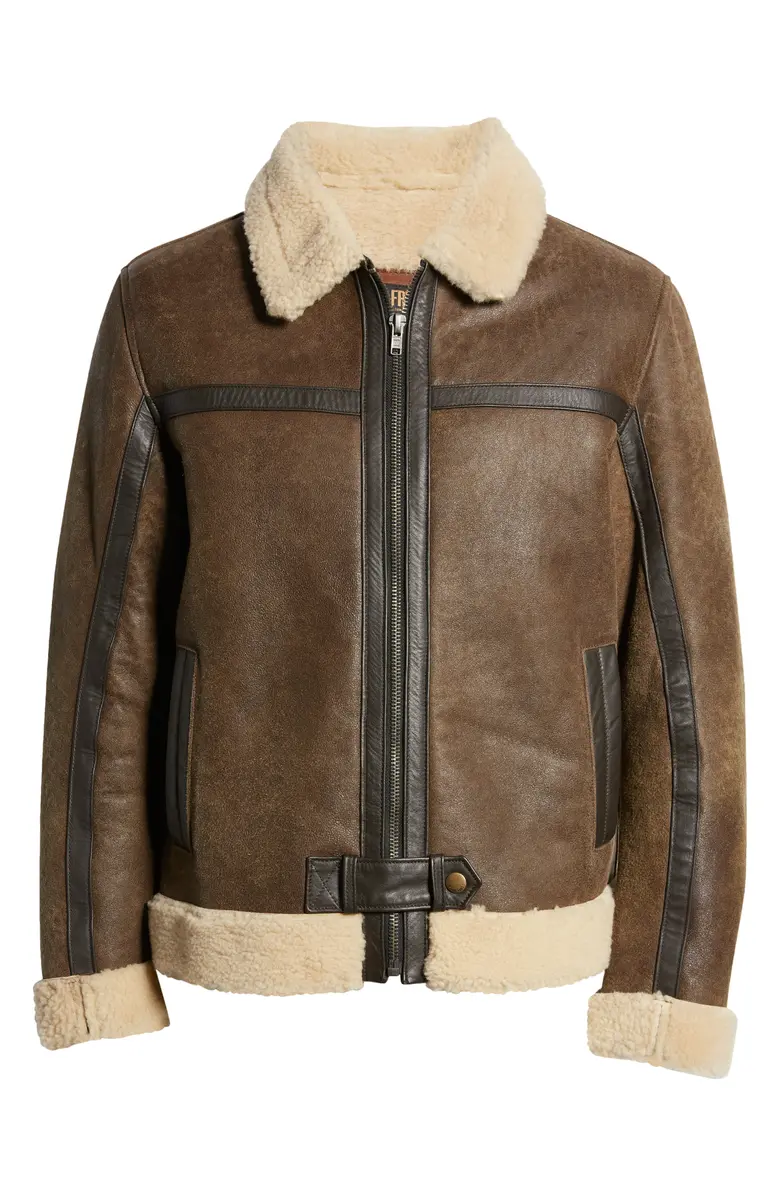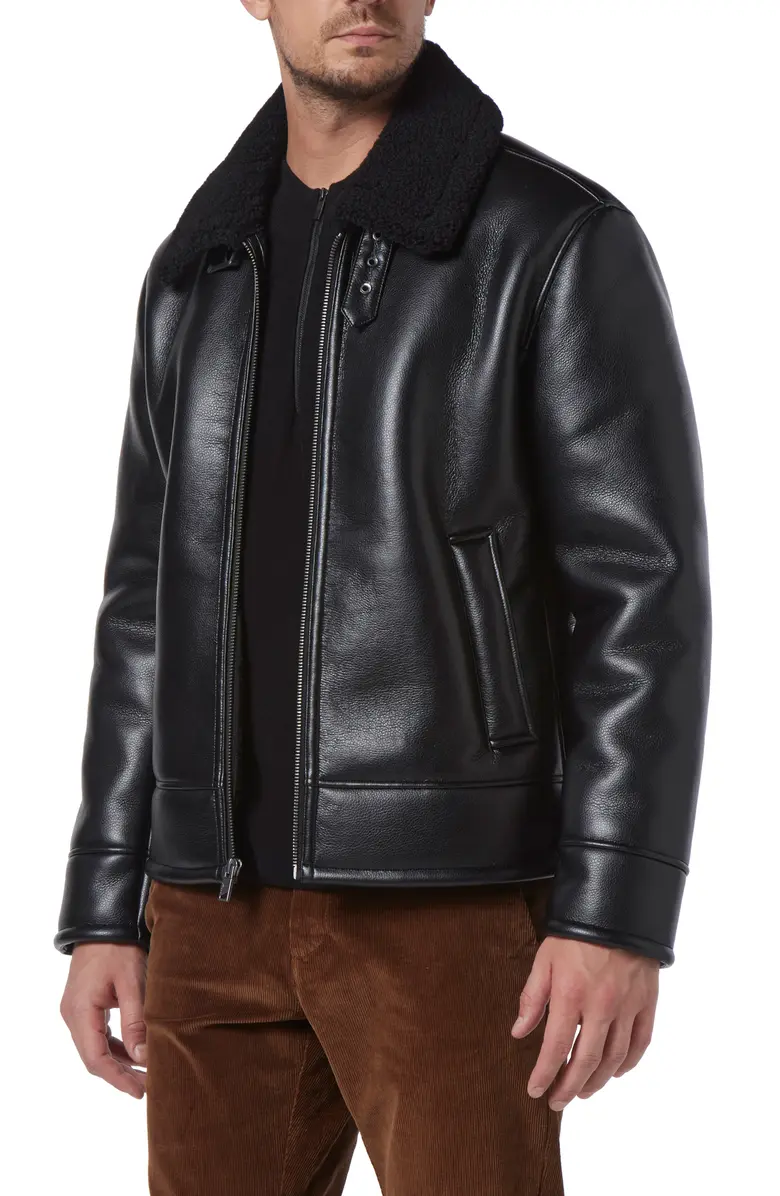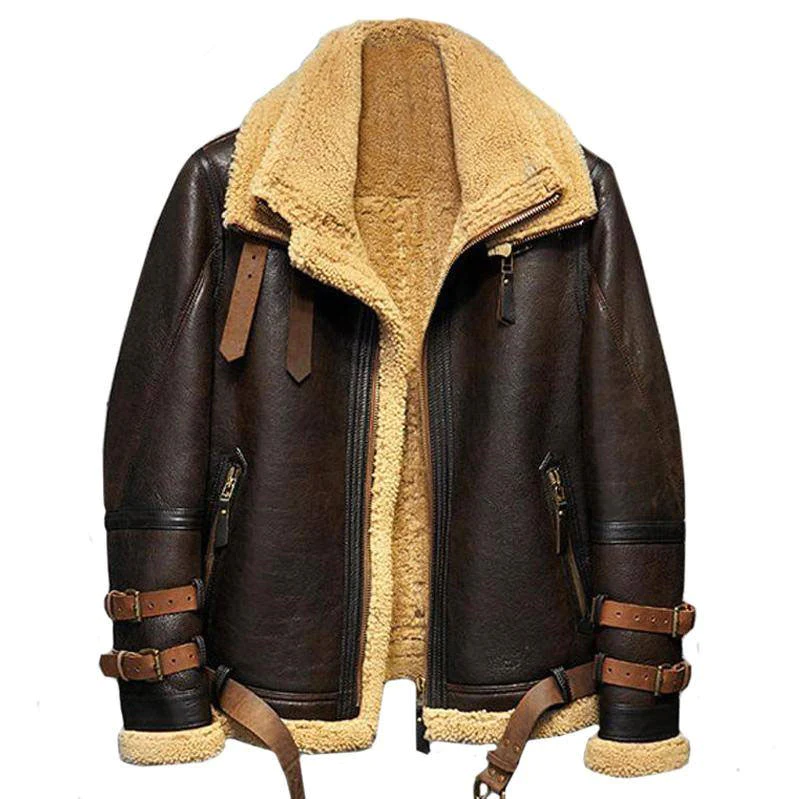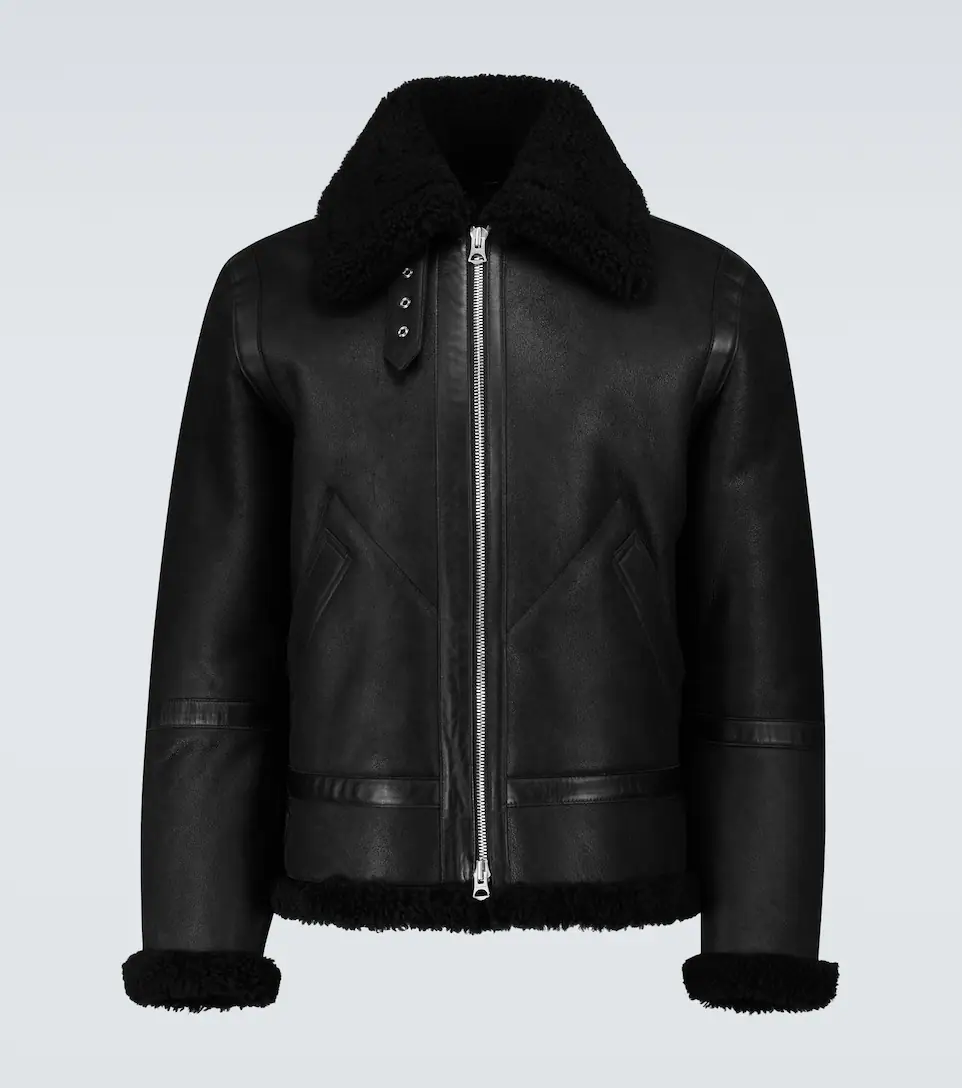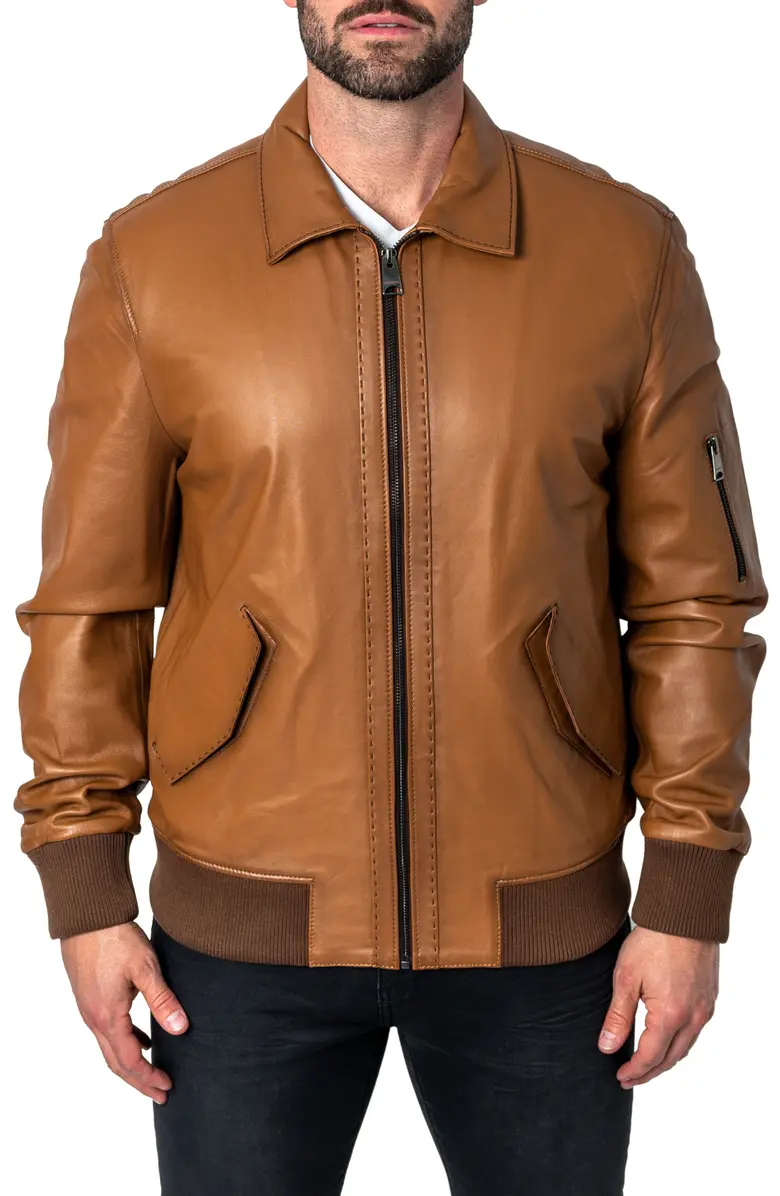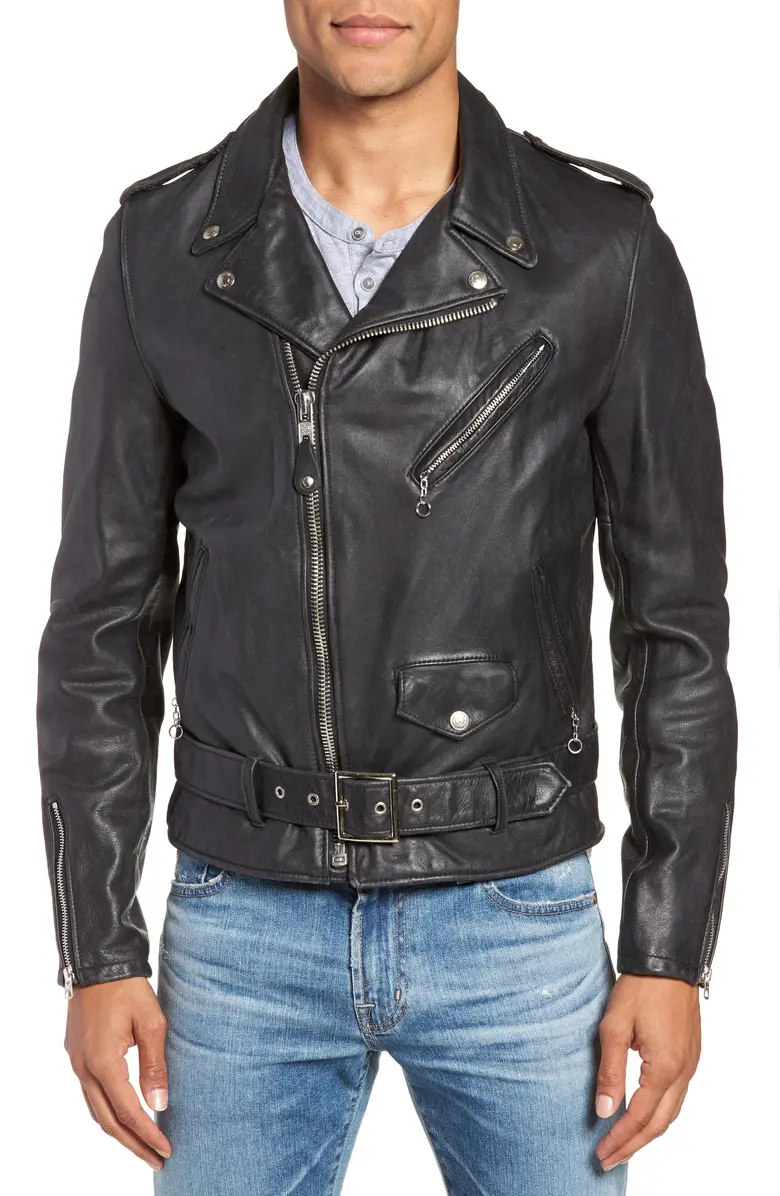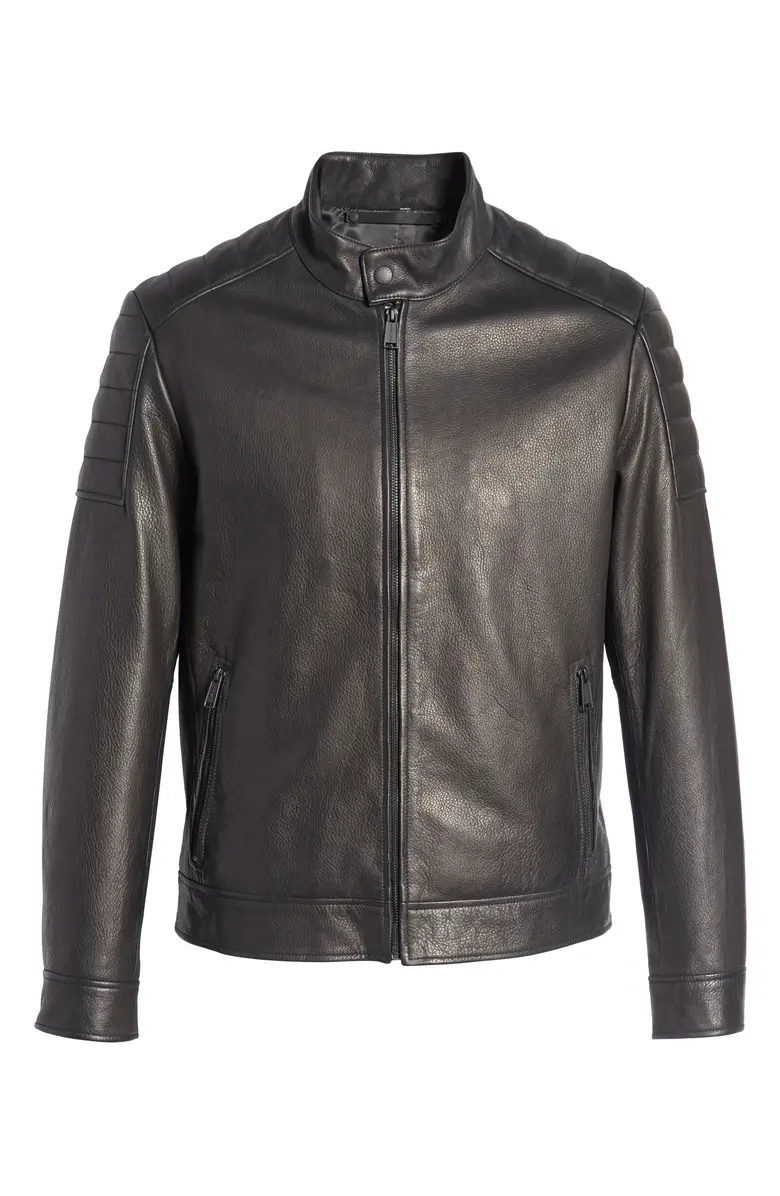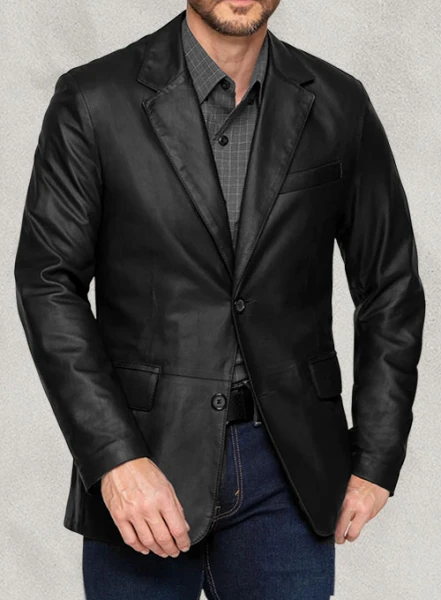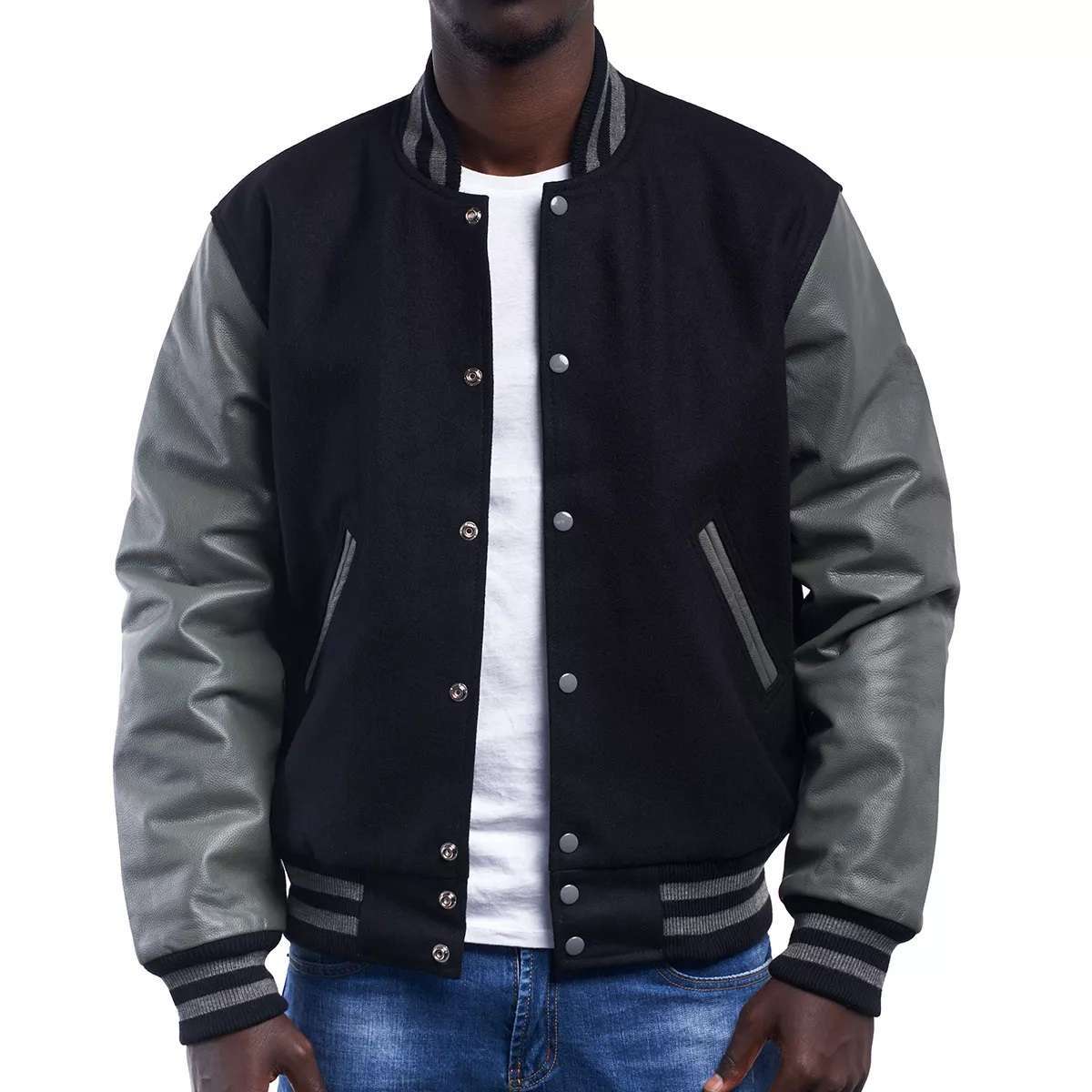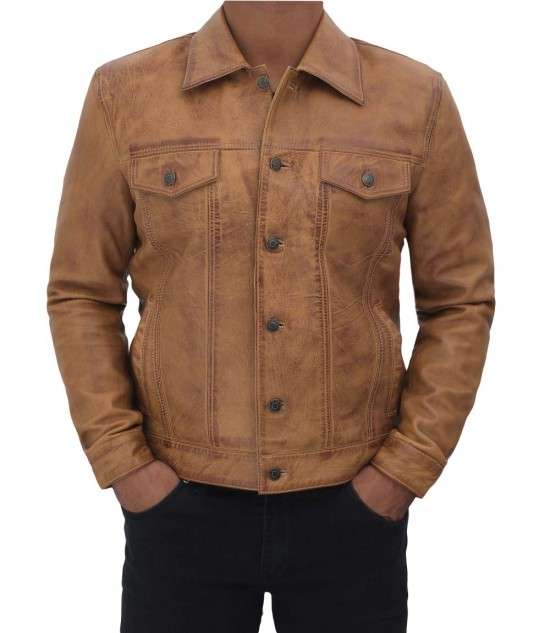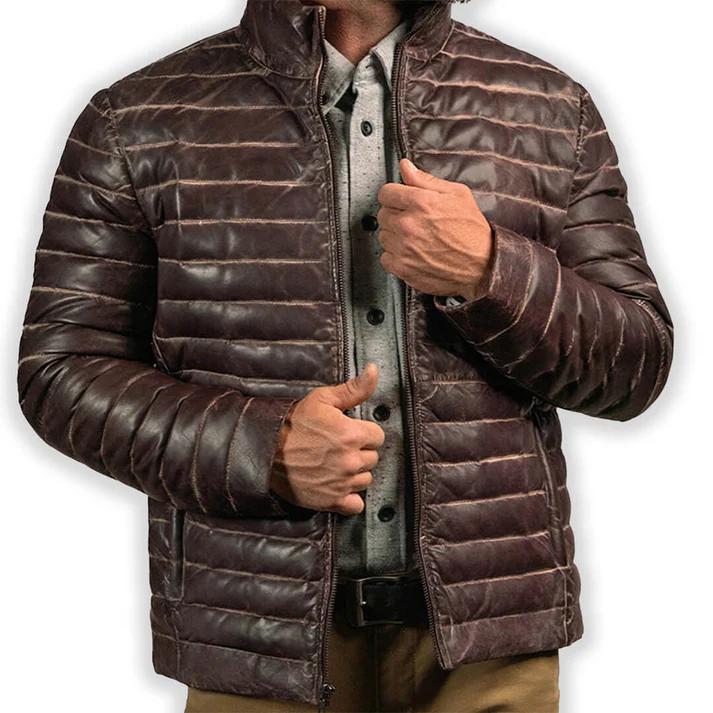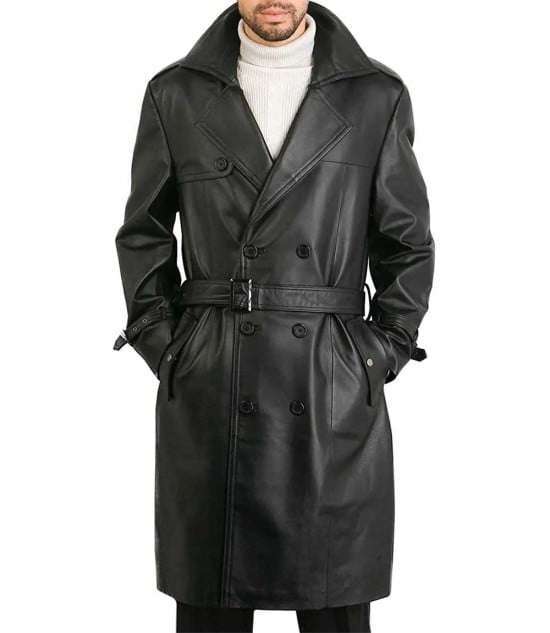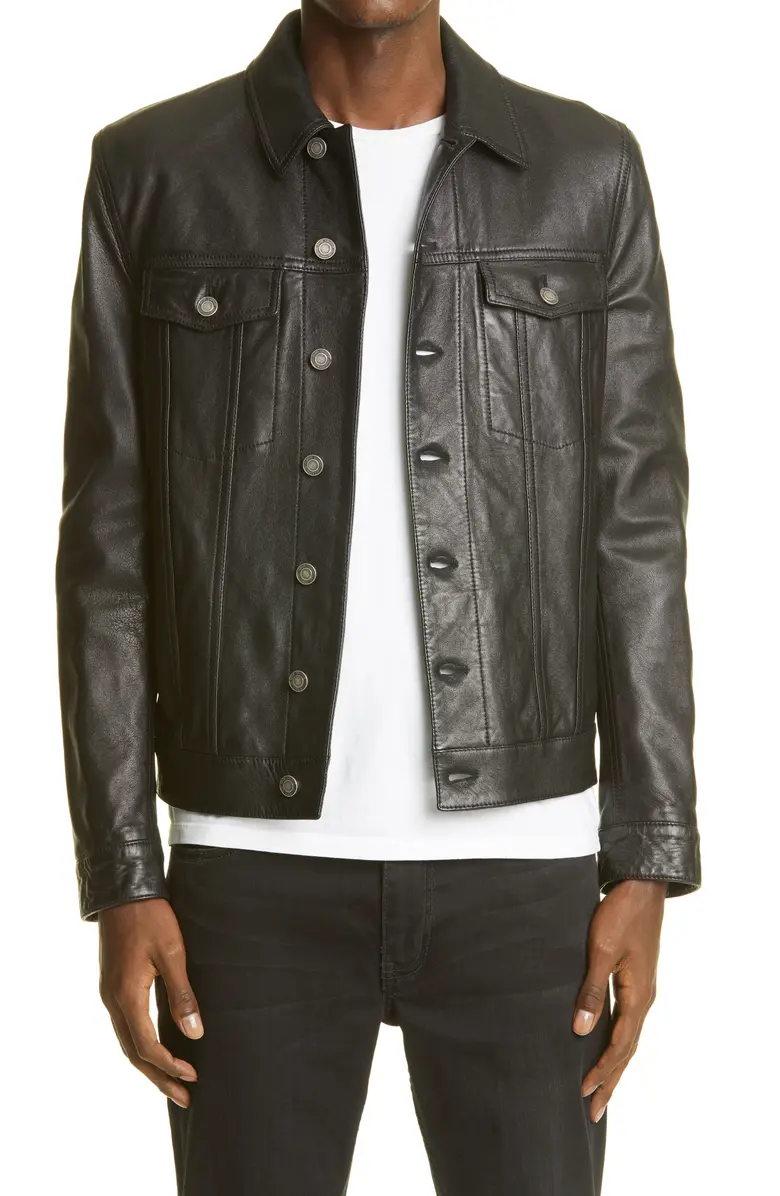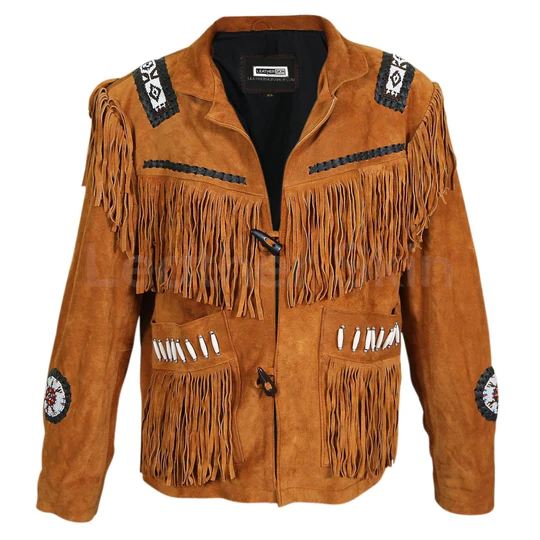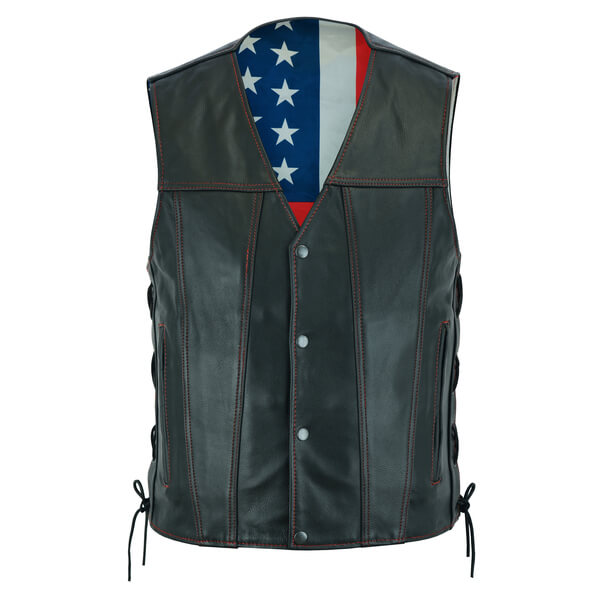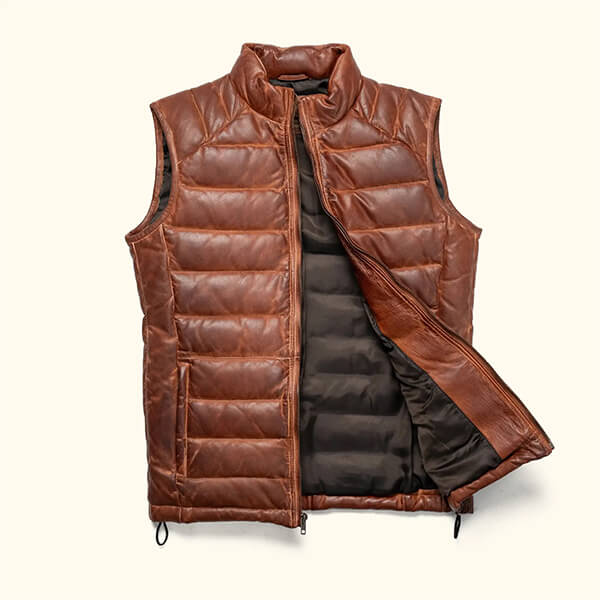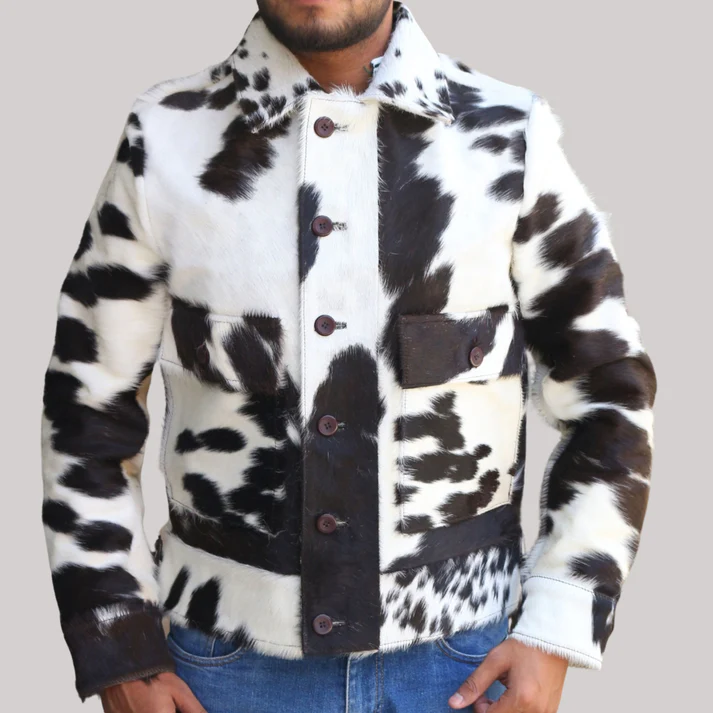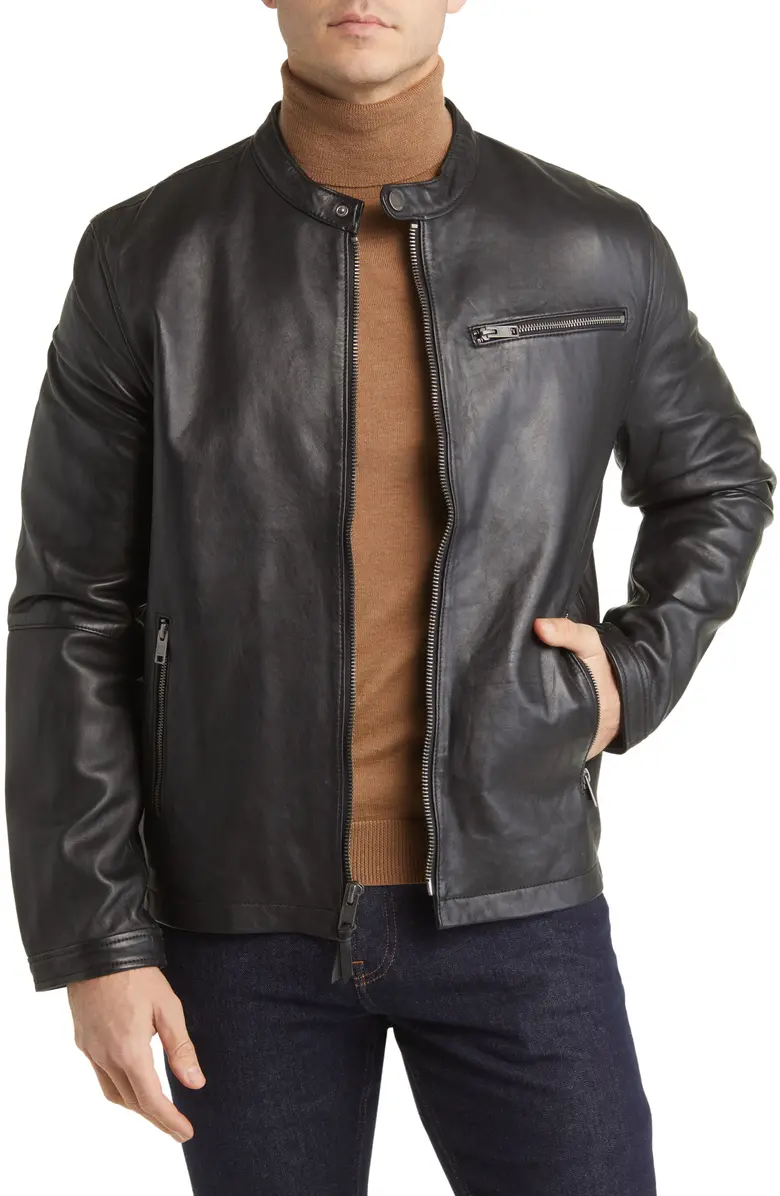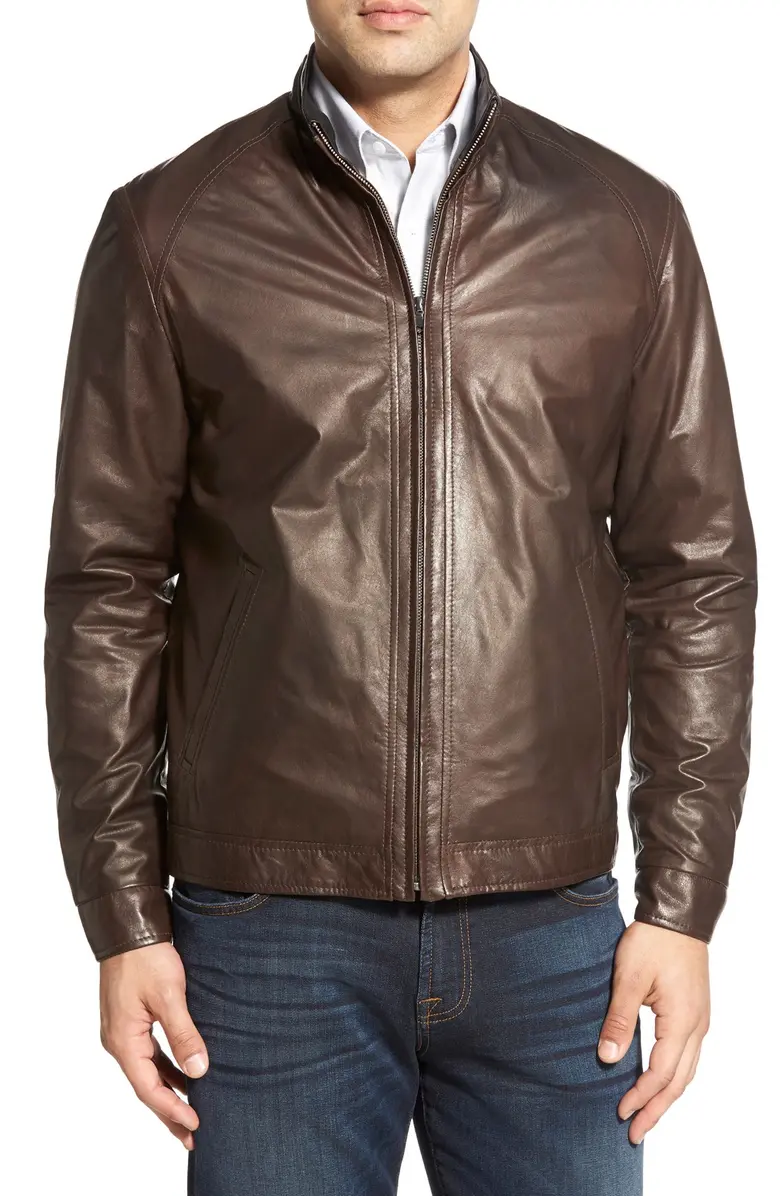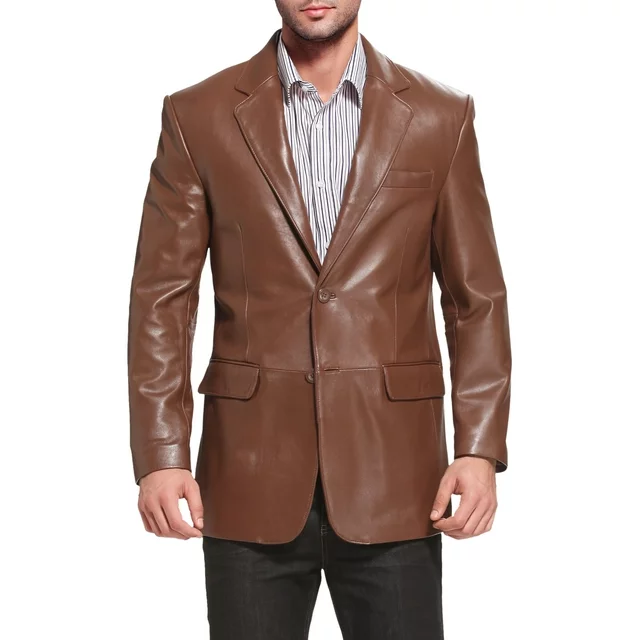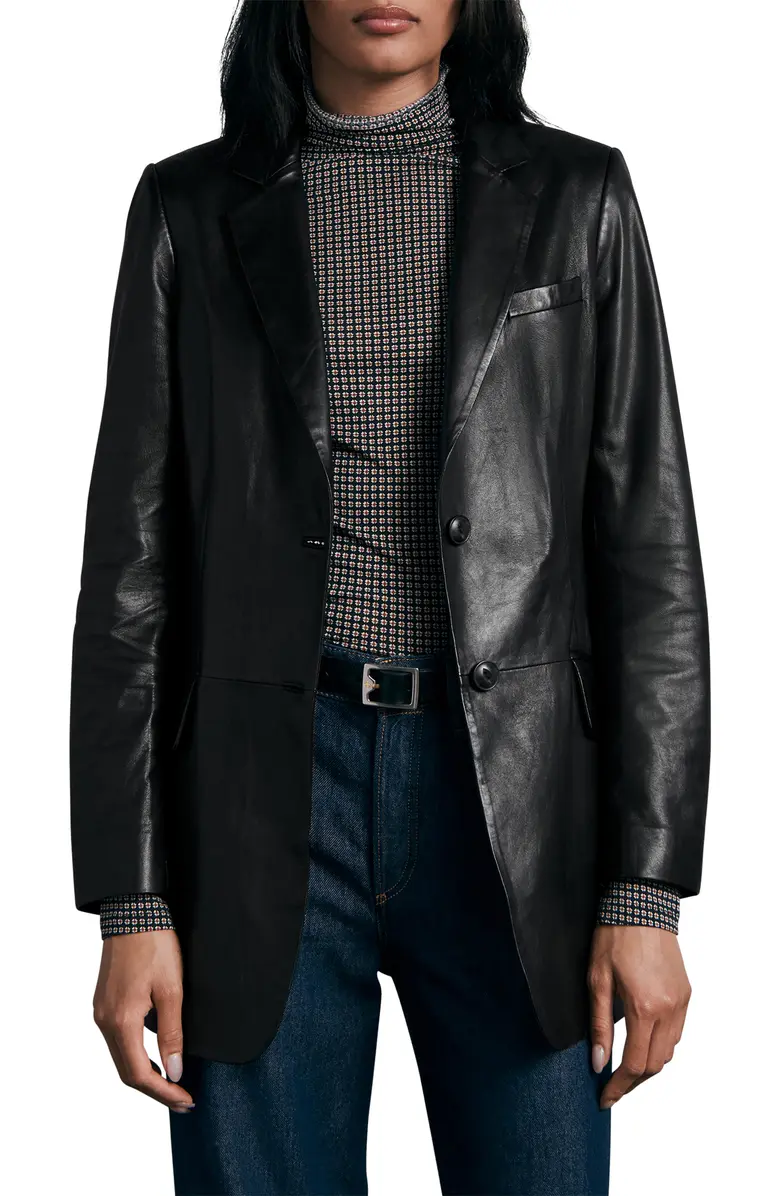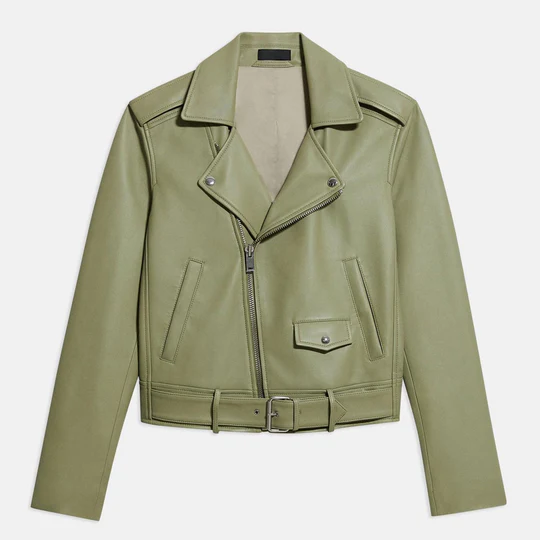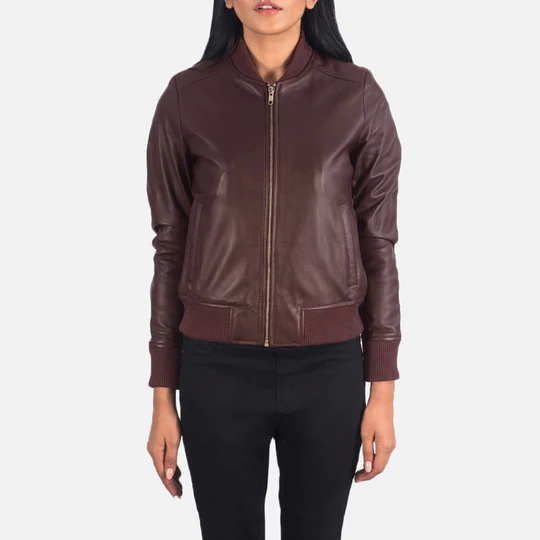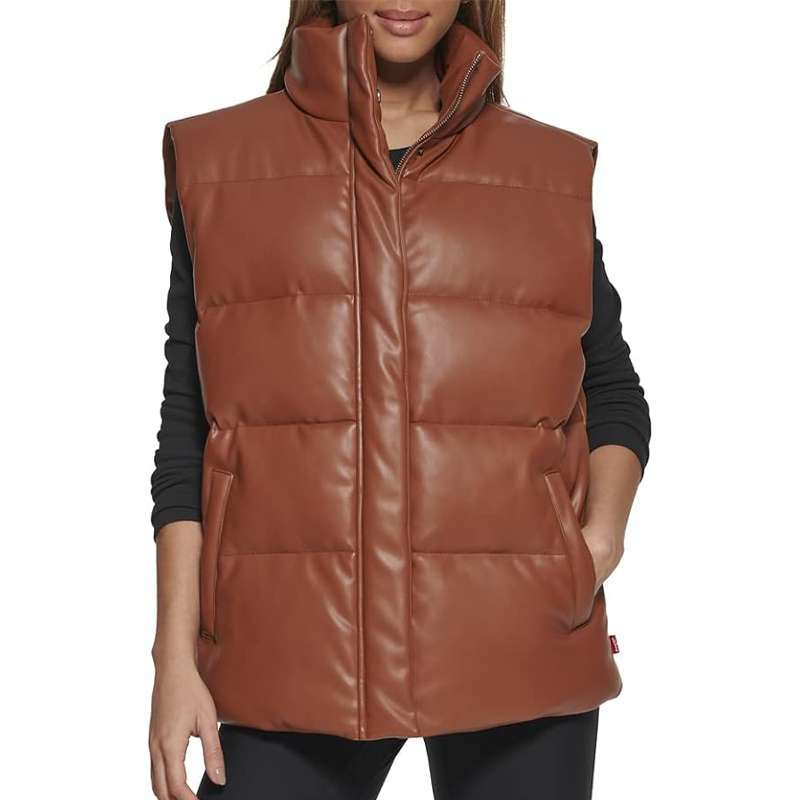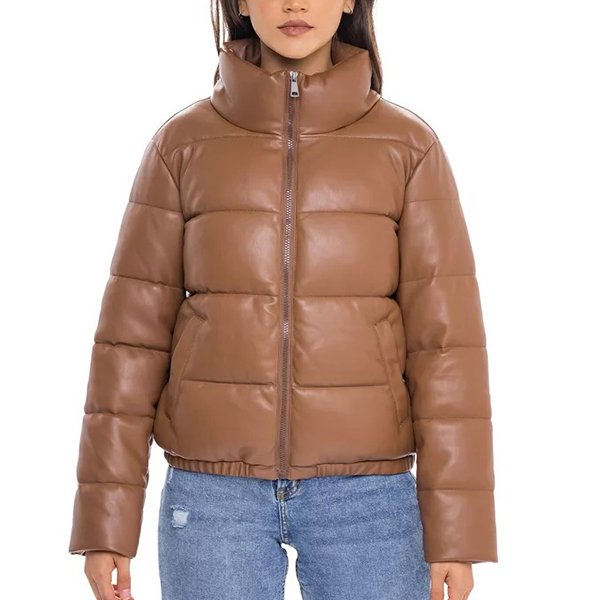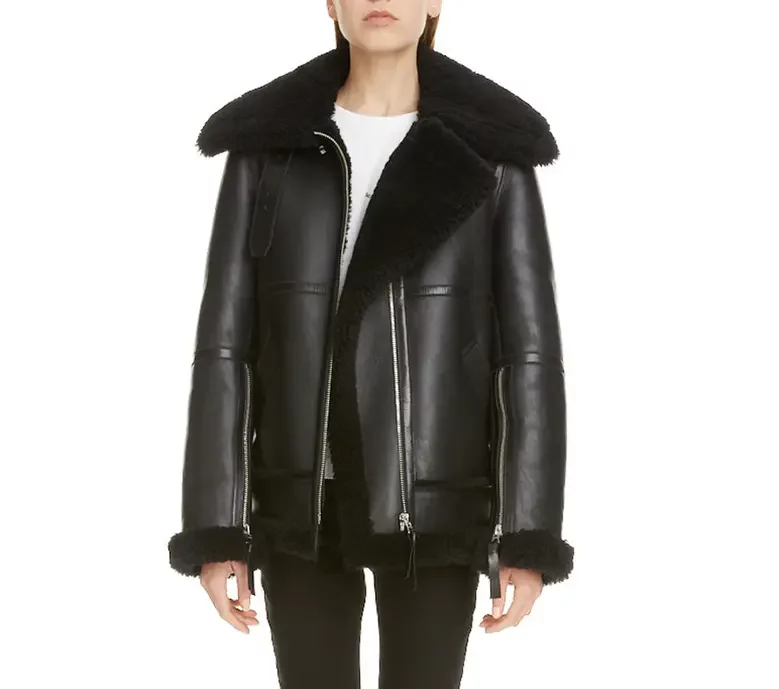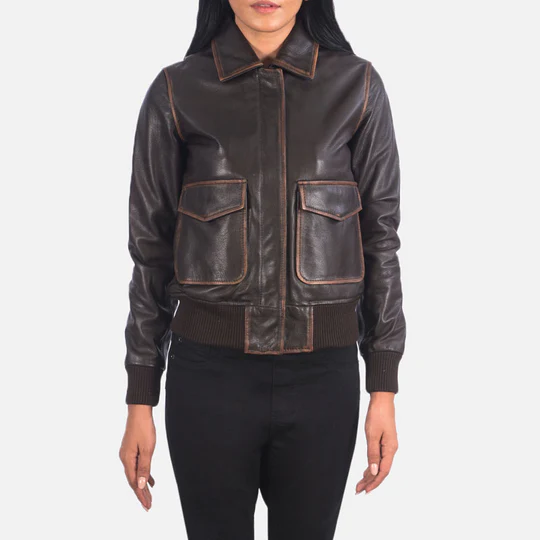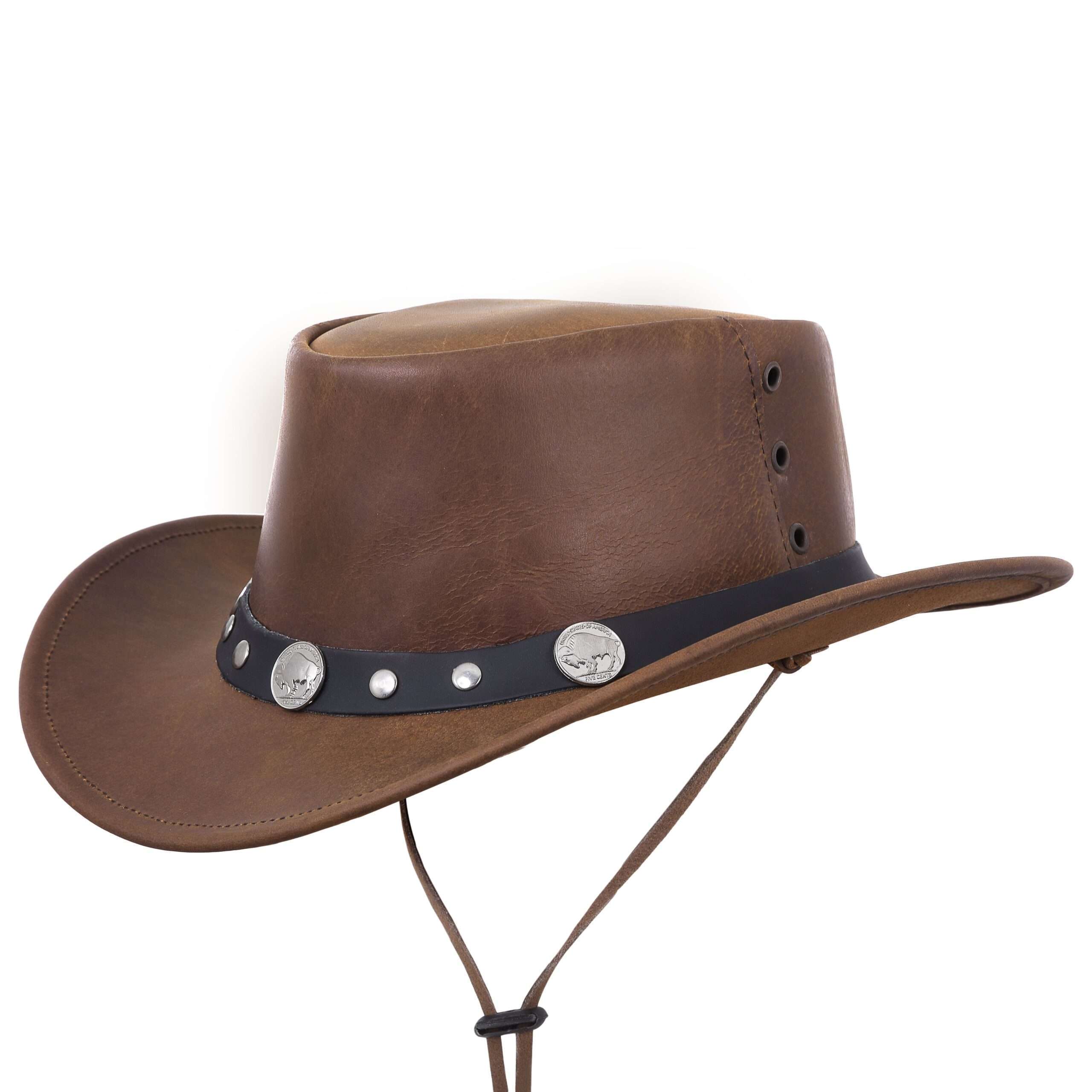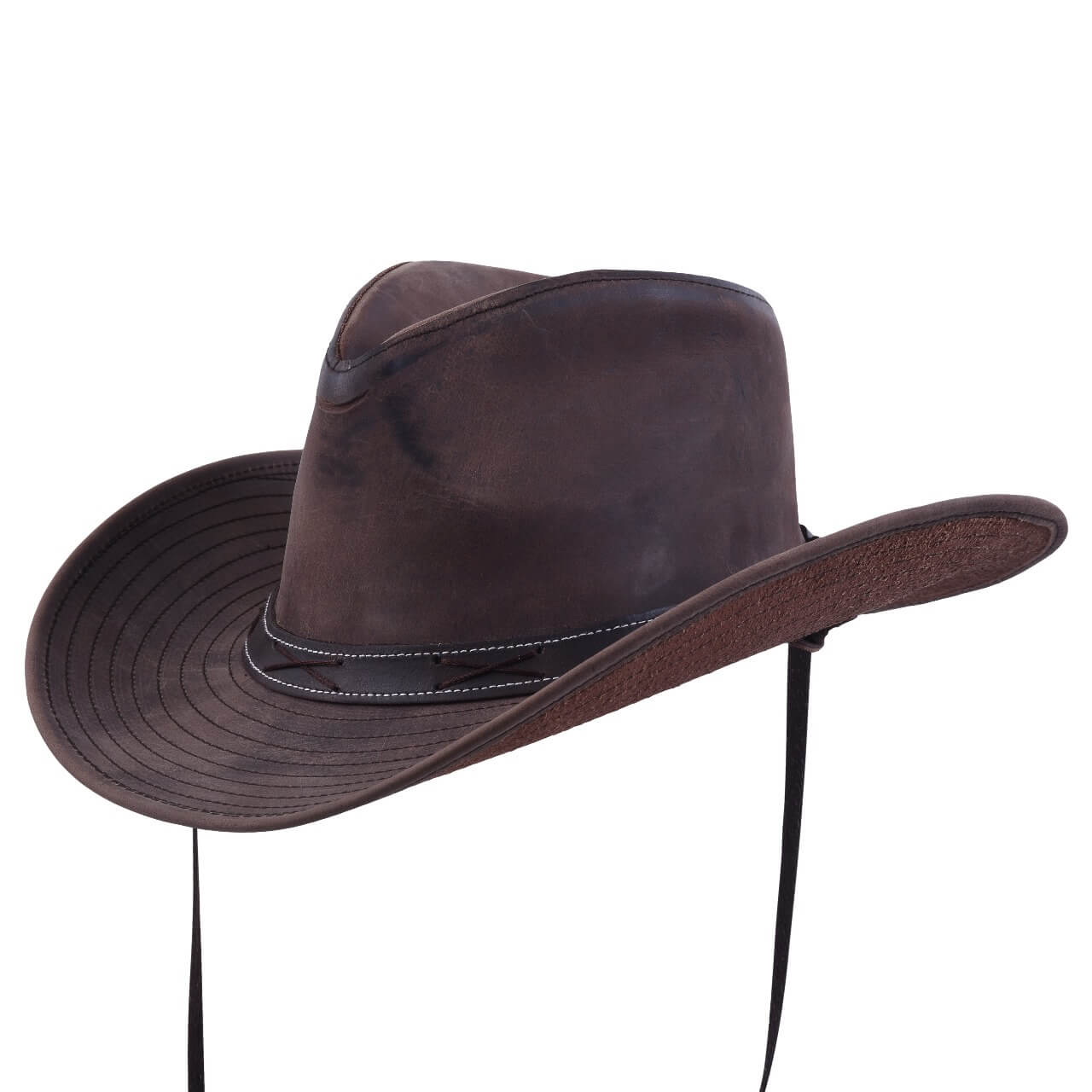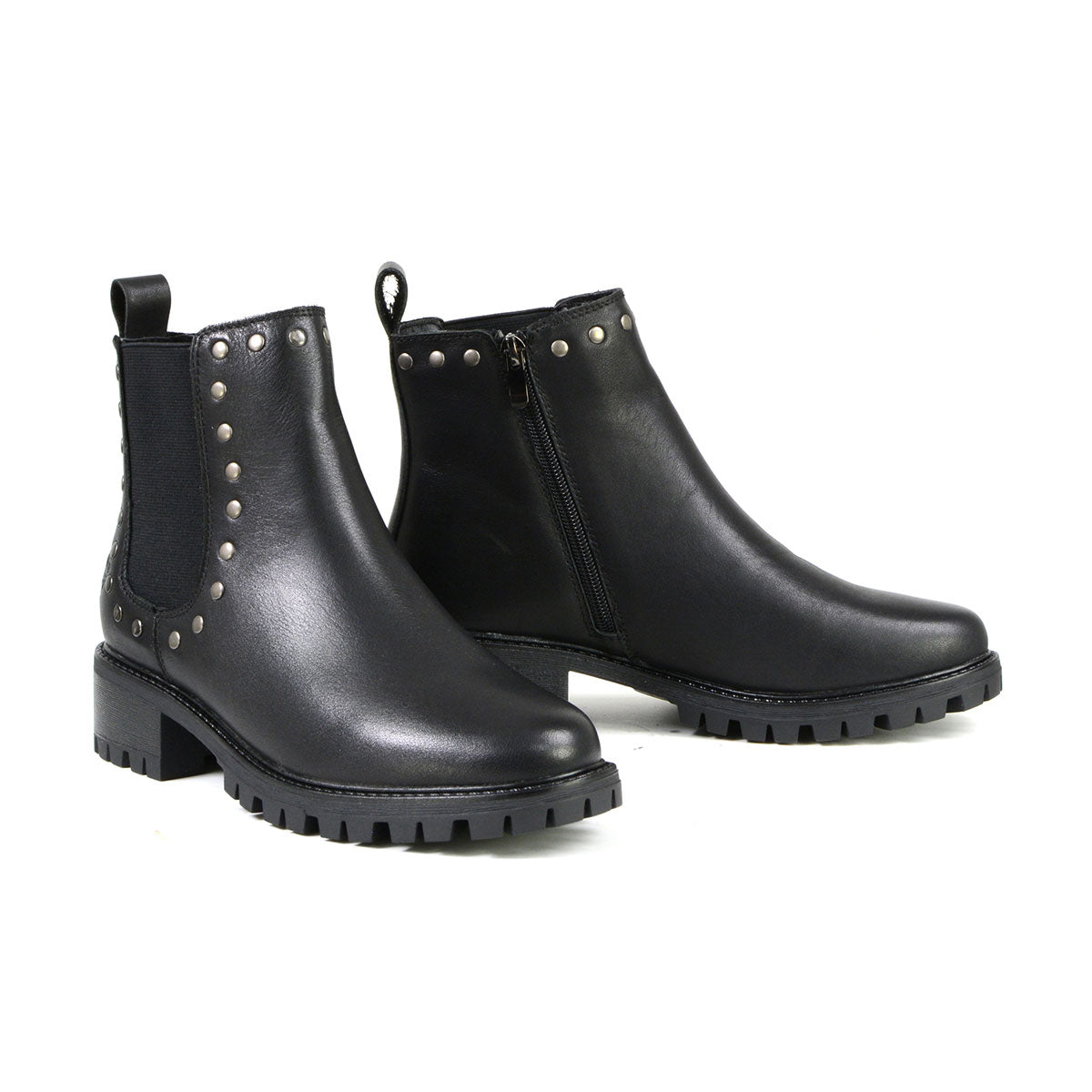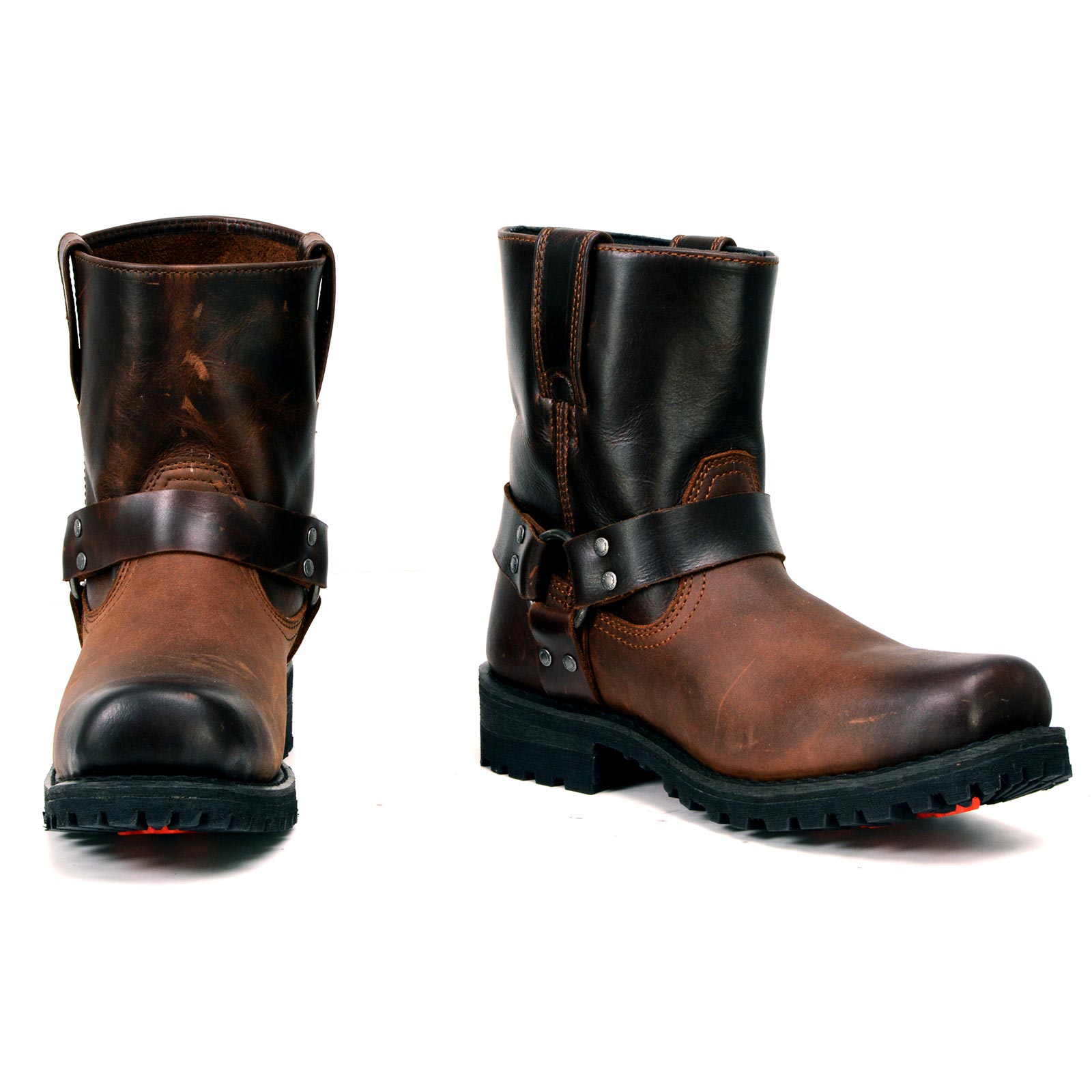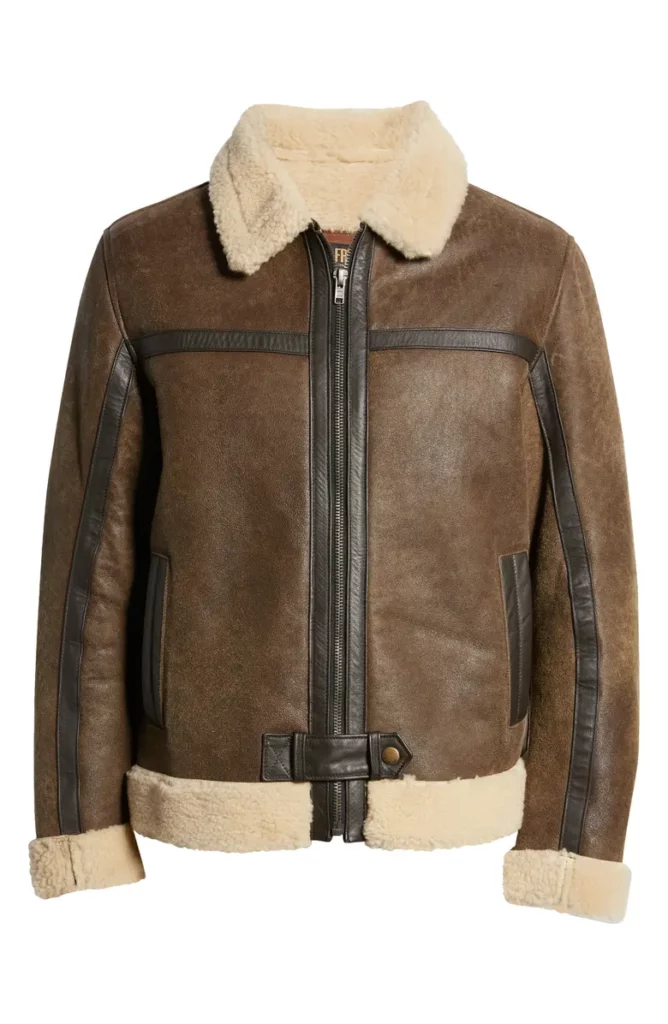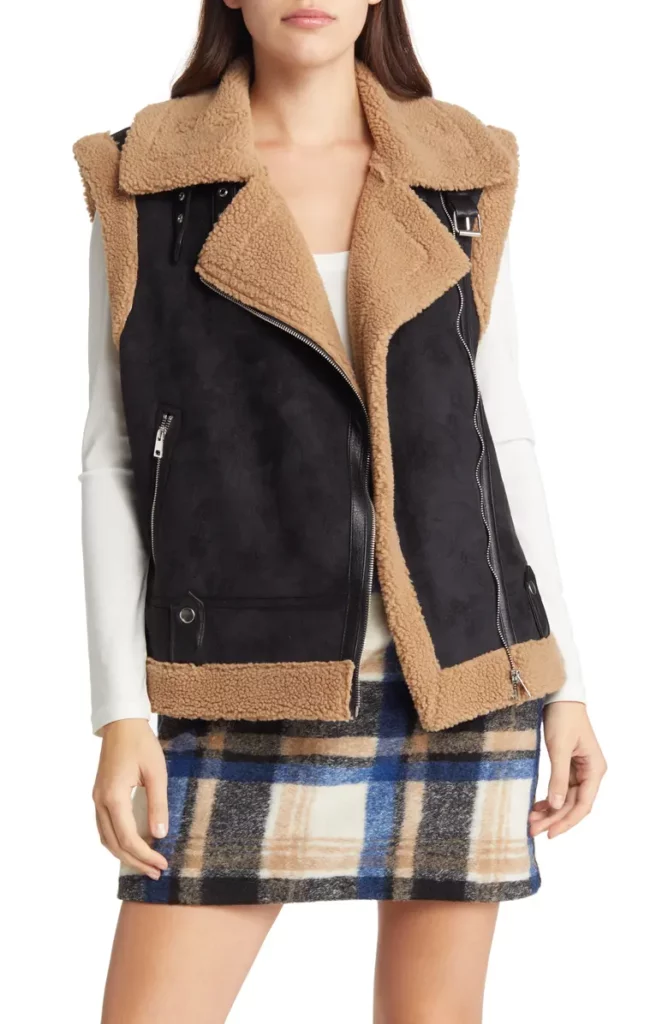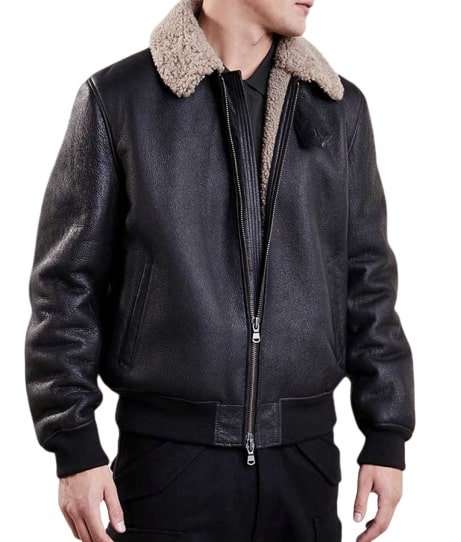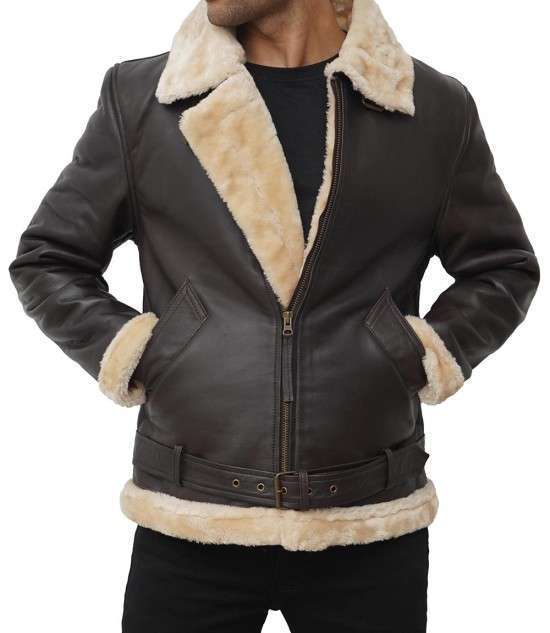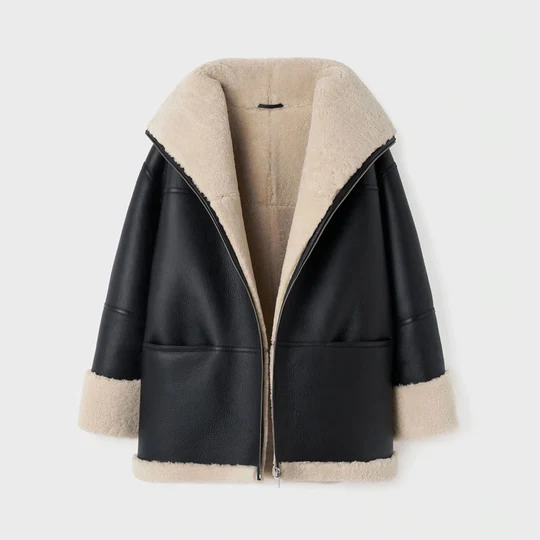Fur lined leather jackets are a staple in any stylish wardrobe, combining the durability of leather with the luxurious warmth of fur. Proper care and maintenance of these jackets are essential to extend their lifespan and maintain their appearance. Ignoring the care instructions can lead to damage, reducing the jacket’s aesthetic appeal and functional value.
Why Proper Care Matters
Leather and fur are both natural materials that require specific care routines. Leather can dry out and crack if not conditioned regularly, while fur can become matted and lose its softness. Proper care ensures that both materials remain supple and beautiful, preserving the jacket’s quality and value.
Sherpa Lined Genuine Leather Flight Bomber Aviator Jacket
Understanding Your Jacket
To properly care for your shearling jacket, it’s essential to understand the types of leather used in its construction. Different types of leather require different care techniques, and knowing what kind of leather your jacket is made of will help you maintain it correctly.
Types of Leather
Full-Grain Leather
Full-grain leather is the highest quality leather available. It is made from the top layer of the hide, which includes all the natural grain. This type of leather is highly durable and develops a rich patina over time, which adds to its beauty. The natural imperfections and markings on full-grain leather give each piece a unique character.
Characteristics of Full-Grain Leather
- Durability: Extremely strong and long-lasting.
- Appearance: Shows natural grain and develops a beautiful patina.
- Maintenance: Requires regular conditioning to prevent drying and cracking.
Top-Grain Leather
Top-grain leather is the second-highest grade of leather. It is made by splitting the top layer of the hide and sanding away imperfections. This process gives top-grain leather a smooth and uniform appearance. While not as durable as full-grain leather, it is still a high-quality material that is easier to work with.
Characteristics of Top-Grain Leather
- Durability: Slightly less durable than full grain but still very strong.
- Appearance: Smooth and uniform, often treated to resist stains.
- Maintenance: Benefits from regular conditioning and occasional cleaning.
Genuine Leather
Genuine leather is made from the lower layers of the hide that are left after the top layers are split off. It is the most affordable type of real leather, often used in fashion items. Genuine leather is less durable and does not have the same luxurious feel as higher grades of leather.
Characteristics of Genuine Leather
- Durability: Less durable, more prone to wear and tear.
- Appearance: Treated to look smooth but lacks the natural grain.
- Maintenance: Requires regular care to maintain its appearance and prevent damage.
Bonded Leather
Bonded leather is made from leather scraps and fibers that are bonded together with polyurethane or latex onto a fiber sheet. This type of leather is the least durable and is often used in lower-end products. While it may have the appearance of leather, it does not have the same qualities as genuine or top-grain leather.
Characteristics of Bonded Leather
- Durability: Least durable, prone to peeling and cracking.
- Appearance: Can be made to look like higher-quality leather but lacks strength.
- Maintenance: Difficult to maintain, often not worth the effort for long-term use.
Women’s Brown Aviator Sherpa Leather Vest
Types of Fur
Fur lined leather jackets can feature various types of fur, each with unique characteristics and care requirements. Knowing the type of fur used in your jacket will help you maintain its quality and longevity.
Real Fur
Real fur is sourced from animals and has been used for centuries for its warmth, durability, and luxurious feel. It is often more expensive and requires careful maintenance to preserve its softness and appearance.
Common Types of Real Fur
Shearling: Shearling is lamb or sheep hide with the wool still attached. It is soft, warm, and often used in jackets and shearling coats. Shearling fur provides excellent insulation and has a distinct, plush texture.
- Characteristics: Thick, dense, and warm.
- Care: Requires gentle cleaning, brushing, and occasional professional care to maintain its appearance.
Mink: Mink fur is one of the most luxurious and sought-after types of wool. It is lightweight, soft, and has a natural sheen. Mink fur is durable and provides excellent warmth without being bulky.
- Characteristics: Silky, lightweight, and glossy.
- Care: Needs regular brushing and professional cleaning to retain its luster and softness.
Fox: Fox fur is known for its long, soft, and fluffy guard hairs. It comes in a variety of natural colors and is often used in trims and collars.
- Characteristics: Voluminous, soft, and fluffy.
- Care: Requires gentle handling and professional cleaning to avoid matting and tangling.
Rabbit: Rabbit fur is soft, lightweight, and relatively affordable compared to other types of real fur. It provides good warmth and is commonly used in both full garments and trims.
- Characteristics: Soft, lightweight, and warm.
- Care: Needs careful handling, regular brushing, and occasional professional cleaning.
Faux Fur
Faux fur is a synthetic alternative to real fur. It is made from various materials such as acrylic and polyester and is designed to mimic the look and feel of real fur. Faux fur is an ethical choice and is often easier to care for than real wool.
Popular Variations of Faux Fur
Faux fur comes in a wide range of styles and textures, making it a versatile option for fashion-conscious individuals. Some popular variations include:
Long-Pile Faux Fur Long-pile faux fur has longer fibers that give it a fluffy and voluminous appearance. It is often used in jackets, vests, and accessories.
- Characteristics: Fluffy, voluminous, and soft.
- Care: Can be machine-washed on a gentle cycle but often benefits from hand washing and air drying to maintain its texture.
Short-Pile Faux Fur Short-pile faux fur has shorter fibers and a smoother texture. It is commonly used in linings, trims, and more subtle applications.
- Characteristics: Smooth, soft, and less voluminous.
- Care: Generally, machine-washable, but air drying is recommended to prevent damage.
Textured Faux Fur Textured faux fur includes styles such as curly, wavy, or patterned fur. These variations add unique visual interest and are used in fashion-forward designs.
- Characteristics: Unique textures and patterns.
- Care: Requires gentle washing and careful drying to preserve the texture.
Classic Aviator Black Sherpa Leather Pilot Jacket
Preparing for Cleaning
Proper preparation is crucial before cleaning your wool lined leather jacket to ensure that you do not damage the materials. This involves reading the care label, interpreting the symbols and instructions, following manufacturer recommendations, and gathering the necessary supplies.
Reading the Care Label
Importance of the Care Label
The care label on your jacket provides essential information on how to clean and maintain your garment. Ignoring these instructions can lead to irreversible damage to both the leather and the fur.
Interpreting Symbols and Instructions
Care labels often use symbols to convey cleaning instructions. Understanding these symbols is key to proper care.
- Washing Symbols: Indicate whether the item can be machine-washed, hand-washed, or if it requires professional cleaning.
- Drying Symbols: Provide guidelines on whether the item can be tumble-dried or should be air-dried.
- Ironing Symbols: Indicate if ironing is permissible and at what temperature.
- Dry Cleaning Symbols: Show if professional dry cleaning is recommended and any specific dry-cleaning methods to be used.
Manufacturer Recommendations
Following Specific Guidelines
Manufacturers often include specific recommendations for the care of their products. These guidelines can include:
- Preferred Cleaning Methods: Whether to hand-wash, machine-wash, or dry clean.
- Suitable Cleaning Agents: Types of cleaners that are safe to use on the materials.
- Drying Techniques: Best practices for drying the jacket to maintain its shape and quality.
Consulting the Manufacturer
If in doubt, contact the manufacturer directly for advice on caring for your wool lined leather jacket. They can provide detailed instructions and recommendations tailored to your specific garment.
Gathering Necessary Supplies
Cleaning Agents
Choosing the right cleaning agents is crucial to avoid damaging your jacket. Here are some commonly used products:
- Leather Cleaner: A gentle cleaner specifically formulated for leather. Avoid harsh chemicals or detergents that can strip the leather of its natural oils.
- Leather Conditioner: Helps to moisturize and protect the leather, keeping it supple and preventing cracks.
- Fur Cleaner: A specialized cleaner designed for fur. Often available as a spray or liquid, it helps maintain the softness and shine of the fur.
Tools and Accessories
Having the right tools and accessories makes the cleaning process easier and more effective.
- Soft Cloths: For applying cleaners and conditioners to the leather without scratching the surface.
- Soft-Bristled Brushes: For gently cleaning and detangling the fur.
- Sponges: Useful for applying cleaners to larger areas.
- Wide-Shouldered Hangers: To support the jacket’s shape while it dries.
Cleaning the Leather Exterior
Properly cleaning the leather exterior of sherpa jackets is essential to maintain its appearance and longevity. This process includes spot cleaning, deep cleaning, and conditioning the leather to keep it supple and beautiful.
Spot Cleaning
Identifying Stains
Before you start spot cleaning, it’s important to identify the type of stain you are dealing with. Common types of stains include:
- Oil and Grease Stains: Often caused by food or skin oils.
- Ink Stains: From pens or markers.
- Water Stains: Result from exposure to rain or spills.
- Dirt and Mud Stains: From outdoor activities.
Suitable Cleaning Solutions for Different Stains
Different stains require different cleaning approaches to effectively remove them without damaging the leather.
- Oil and Grease Stains: Sprinkle cornstarch or baking soda on the stain to absorb the oil. Let it sit for a few hours, then gently brush it off. Repeat if necessary.
- Ink Stains: Dab the stain with a cotton swab dipped in rubbing alcohol or nail polish remover. Test on an inconspicuous area first to ensure it doesn’t discolor the leather.
- Water Stains: Wipe the stain with a damp cloth and allow the leather to dry naturally. Avoid using heat sources to dry the leather.
- Dirt and Mud Stains: Let the mud dry completely, then gently brush it off with a soft brush. For remaining dirt, use a damp cloth and mild soap solution.
Dark Brown Sherpa Leather Bomber Jacket Men’s
Deep Cleaning
Homemade Leather Cleaner Recipes
Homemade leather cleaners can be an effective and budget-friendly option. Here are a few recipes:
- Vinegar and Water Solution: Mix equal parts of white vinegar and water. Dampen a cloth with the solution and gently wipe the leather.
- Mild Soap Solution: Mix a small amount of mild dish soap with water. Use a cloth to apply the solution and clean the leather.
Commercial Leather Cleaners
Commercial leather cleaners are formulated specifically for cleaning leather and often provide superior results. Some recommended products include:
- Leather Honey Cleaner: A gentle yet effective cleaner for all types of leather.
- Lexol Leather Cleaner: Well-known for its deep-cleaning properties without harming the leather.
- Weiman Leather Cleaner: Cleans and conditions the leather in one step.
Conditioning the Leather
Importance of Conditioning
Conditioning the leather is a critical step that helps maintain its flexibility, prevents cracks, and restores its natural oils. Regular conditioning keeps the leather looking and feeling new.
Recommended Products and Techniques
- Leather Honey Conditioner: Deeply penetrates the leather to moisturize and protect.
- Lexol Leather Conditioner: Provides a balanced formula that nourishes and strengthens leather.
- Chamberlain’s Leather Milk: A natural conditioner that revitalizes and preserves the leather.
Conditioning Techniques
- Clean the Leather: Ensure the leather is clean and dry before applying any conditioner.
- Apply Conditioner: Use a soft cloth to apply a small amount of conditioner to the leather. Work in a circular motion to ensure even coverage.
- Let it Absorb: Allow the conditioner to absorb into the leather for at least an hour.
- Buff the Leather: Use a clean, dry cloth to buff the leather, enhancing its shine and softness.
Cleaning the Fur Lining
Maintaining the fur lining of your leather jacket is essential for keeping it soft, clean, and luxurious. This involves regular brushing, spot cleaning, and occasional deep cleaning. Here’s a comprehensive guide to help you care for the wool lining of your jacket.
Brushing and Detangling
Tools Needed
To properly brush and detangle your fur lining, you will need the following tools:
- Soft-Bristled Brush: A brush designed specifically for fur to prevent damage.
- Wide-Tooth Comb: Helps to gently detangle any knots.
- Lint Roller: Removes loose hairs and debris from the fur.
Step-by-Step Brushing Guide
- Lay the Jacket Flat: Place the jacket on a flat surface to make brushing easier.
- Start at the Base: Begin brushing at the base of the fur, working your way towards the tips.
- Use Gentle Strokes: Use soft, gentle strokes to avoid pulling and damaging the fur.
- Detangle Knots: If you encounter any knots, use a wide-tooth comb to gently work them out without pulling too hard.
- Remove Loose Fur: After brushing, use a lint roller to pick up any loose hairs and debris.
Spot Cleaning Fur
Safe Cleaning Solutions
For spot cleaning the shearling lining, use gentle and safe cleaning solutions such as:
- Mild Detergent Solution: Mix a small amount of mild detergent with water.
- Fur Cleaner: A specialized cleaner designed for fur.
Technique to Avoid Damaging Fur
- Dampen a Cloth: Dampen a clean cloth with the mild detergent solution or fur cleaner.
- Blot the Stain: Gently blot the stained area without rubbing to prevent the fur from matting.
- Rinse: Use another damp cloth with plain water to rinse the area.
- Dry: Pat the area dry with a clean towel and let the fur air dry completely.
Deep Cleaning Fur
When to Consider Professional Cleaning
Deep cleaning your fur lining should be done by a professional if:
- The fur is heavily soiled or stained.
- The fur has become matted or tangled beyond what regular brushing can fix.
- You want to ensure the fur is cleaned thoroughly without risking damage.
Home Cleaning Methods for Fur
If you prefer to clean the sherpa lining at home, follow these steps:
- Shake the Jacket: Shake the jacket gently to remove loose dirt and dust.
- Create a Cleaning Solution: Mix cold water with a small amount of fur cleaner or mild detergent.
- Dampen a Cloth: Dampen a clean cloth with the solution and gently wipe the fur lining.
- Rinse: Use another cloth dampened with plain water to rinse the fur.
- Air Dry: Allow the jacket to air dry in a well-ventilated area away from direct heat and sunlight.
- Brush the Fur: Once dry, brush the fur gently to restore its softness and fluffiness.
Women Oversized Black Leather Shearling Jacket
Drying and Storing Your Fur Lined Leather Jacket
Proper drying and storage are crucial to maintaining the quality and longevity of your sherpa lined leather jacket. Following the right techniques and tips will ensure your jacket remains in excellent condition.
Proper Drying Techniques
Air Drying vs. Machine Drying
Air Drying: Air drying is the safest method for drying both leather and fur. It helps prevent damage and maintains the integrity of the materials.
- Steps: After cleaning, hang your jacket on a wide-shouldered hanger in a well-ventilated area. Avoid direct sunlight and heat sources to prevent the leather from drying out and the fur from matting.
Machine Drying: Machine drying is generally not recommended for fur lined leather jackets, as the heat and agitation can damage both the leather and the fur.
Preventing Fur Matting
To prevent wool matting during the drying process:
- Shake the Jacket: Gently shake the jacket to fluff the fur before hanging it to dry.
- Brush the Fur: Once the jacket is dry, use a soft-bristled brush to gently detangle and fluff the fur.
Storage Tips
Ideal Storage Conditions
Proper storage is essential to maintain your jacket’s condition:
- Cool and Dry: Store your jacket in a cool, dry place to prevent mold and mildew growth.
- Avoid Direct Sunlight: Exposure to sunlight can cause the leather to fade and dry out.
- Breathable Garment Bag: Use a breathable garment bag to protect your jacket from dust while allowing air circulation.
Long-Term Storage Solutions
For long-term storage:
- Clean Before Storing: Ensure your jacket is clean and completely dry before storing it.
- Wide-Shouldered Hanger: Use a wide-shouldered hanger to maintain the jacket’s shape.
- Avoid Plastic Bags: Do not store your jacket in plastic bags, as they can trap moisture and cause mildew.
Preventative Care
Regular Maintenance Routine
Implementing a regular maintenance routine will keep your jacket in top condition.
Weekly and Monthly Care Tips
- Weekly: Brush the fur and wipe down the leather with a damp cloth to remove dust and dirt.
- Monthly: Condition the leather with a suitable conditioner to keep it supple.
Quick Daily Habits
Adopt these quick daily habits to protect your jacket:
- Hang Properly: Always hang your jacket on a wide-shouldered hanger when not in use.
- Avoid Overloading Pockets: Avoid placing heavy items in the pockets to prevent stretching and deformation.
Protecting Against Damage
Water and Stain Repellents: Use water and stain repellents designed for leather to protect your jacket from spills and stains.
- Application: Follow the product instructions carefully and test on a small area first to ensure it does not discolor the leather.
Handling and Wearing Precautions:
- Avoid Exposure to Harsh Conditions: Try to avoid wearing your jacket in heavy rain or snow.
- Remove with Care: Take off your jacket gently to avoid stressing the seams and shoulders.
- Store Properly After Use: Hang your jacket properly after each use to maintain its shape.
When to Seek Professional Help
While regular home maintenance is essential for keeping your fur lined leather jacket in good condition, there are times when professional help is necessary. Understanding when to seek professional cleaning can save your jacket from damage and extend its life.
Recognizing When Home Cleaning Isn’t Enough
There are several signs that indicate your jacket needs professional care:
- Severe Stains: Stains that do not come out with regular spot cleaning or those that have set into the leather or fur.
- Odors: Persistent odors that cannot be eliminated with home cleaning methods.
- Matted Fur: Fur that is heavily matted and tangled, beyond what regular brushing can fix.
- Discoloration: Significant discoloration or fading of the leather or fur.
- Damage: Visible damage to the leather or fur, such as tears, holes, or severe wear.
Finding a Professional Cleaner
What to Look for in a Service
When selecting a professional cleaner, consider the following factors:
- Specialization: Choose a cleaner that specializes in leather and fur garments. They will have the necessary expertise and equipment to handle your jacket properly.
- Reputation: Look for reviews and testimonials from previous customers to gauge the quality of the service.
- Experience: An experienced cleaner with a long history in the business is more likely to provide reliable and effective service.
- Certifications: Check if the cleaner has any industry certifications or memberships in professional organizations, which can indicate a higher standard of service.
Questions to Ask
Before entrusting your jacket to a professional cleaner, ask the following questions:
- What is your experience with fur lined leather jackets? Ensure the cleaner has specific experience with this type of garment.
- What cleaning methods do you use? Inquire about the methods and products used to clean leather and fur to ensure they are safe and effective.
- Can you provide references or testimonials? Request references or read testimonials to confirm the quality of their work.
- What is the expected turnaround time? Know how long it will take to clean your jacket, so you can plan accordingly.
- What guarantees or warranties do you offer? Check if they offer any guarantees or warranties on their work to protect your investment.
Conclusion
Caring for your fur lined leather jacket involves several crucial steps: understanding the types of leather and fur, proper cleaning techniques, effective drying and storage methods, and knowing when to seek professional help. By following these guidelines, you can ensure your jacket remains in excellent condition, maintaining its beauty and durability for years to come.
